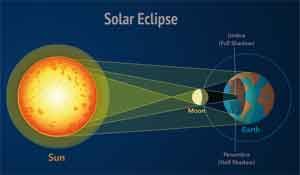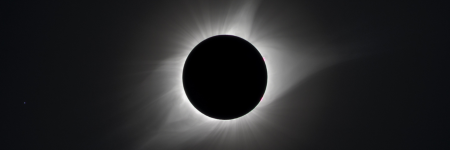Understanding eclipses: Lunar and Solar
What is a Lunar eclipse? 🌕
A lunar eclipse occurs when the Moon passes into the Earth’s shadow. This can only happen during a Full Moon, when the Earth is positioned directly between the Sun and the Moon. Lunar eclipses are known for their deep emotional and reflective energy, making them a time for releasing and letting go.

Lunar Eclipse - Sun / Earth / Moon
What is a Solar eclipse? ☀️
A solar eclipse happens when the Moon moves between the Earth and the Sun, partially or completely blocking the Sun’s light. This can only occur during a New Moon, when the Sun and Moon are perfectly aligned. Solar eclipses are associated with new beginnings and bold action, as they illuminate areas of life that need attention or change.

Solar Eclipse - Sun / Moon / Earth
Why do eclipses happen?
The Moon’s orbit around Earth is elliptical and slightly tilted compared to Earth’s orbit around the Sun. Most of the time, the Moon passes above or below the Earth-Sun alignment. However, during specific New Moons or Full Moons, the Moon aligns perfectly with the Earth and Sun, creating an eclipse.
During a New Moon, the Moon blocks the Sun’s light, causing a solar eclipse. During a Full Moon, the Earth casts its shadow on the Moon, resulting in a lunar eclipse.
>>> Discover the influence of the planets
Don’t miss the eclipses of 2025
The eclipses of 2025 offer opportunities for growth, insight, and transformation. Whether you’re setting intentions during a solar eclipse or reflecting during a lunar eclipse, these celestial events are powerful tools for aligning with your highest potential. Mark your calendar and prepare to harness their energy for a brighter, more purposeful future!
Susan Taylor’s insights: The importance of eclipsesThere are two main types of eclipses:
❖ At Full Moon, which always occurs in two opposite zodiac signs*, the Earth is between the Moon and the Sun. It casts its shadow on the Moon, which is eclipsed.
❖ At New Moon, the lunar disk covers the solar disk as seen from Earth. The Moon is between the Sun and the Earth; it is a Sun-Moon conjunction in the same sign of the zodiac. The Sun is eclipsed.
- The future is mine - |
Check out more of our content here:












 Aries
Aries  Taurus
Taurus  Gemini
Gemini  Cancer
Cancer  Leo
Leo  Virgo
Virgo  Libra
Libra  Scorpio
Scorpio  Sagittarius
Sagittarius  Capricorn
Capricorn  Aquarius
Aquarius  Pisces
Pisces 








Did you like this article?
Want to know more 🤔 ?
Write directly to the authorSusanTaylor !
Ask Susan a question
Want to share your thoughts? Leave a comment